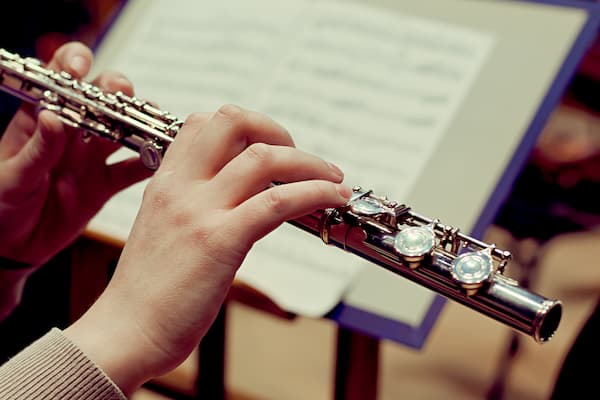Are you looking for a way to express yourself artistically and have some fun? Learning to play the flute can be a great way to accomplish both! It provides an opportunity for self-expression and exploration, as well as the chance to make beautiful music. The only member of the woodwind family to not usually be made of wood or played with a reed, the flute is the only instrument held sideways. Uniquely, its mouthpiece is actually held outside of the mouth, and sound is created by blowing across the hole, not into it. Because of this, the flute requires more air than any other instrument including the tuba. If you think you have lungs of steel, try the flute today!


A sound is created by the player blowing across the tone hole, similar to blowing across the top of a glass bottle. That blown air then vibrates throughout the instrument.
Most beginners start with a closed hole flute because the keys are completely covered. This allows the student time to learn the keys without having to worry about covering the holes completely. The more advanced flautist will state that the open hole flute provides a better tone due to its overall quality. The holes also allow for pitch bending by the user.
A flute can tarnish from natural oils of the player’s fingers and hands while holding the flute if it is not cleaned regularly. The flute should be wiped often with a cleaning cloth. When this is no longer effective, it may be time to get the instrument professionally cleaned.
Though the recorder is in the same family as the flute (woodwinds), the flute and recorder are different instruments. The recorder is usually made of plastic or wood and is held vertically like a clarinet. A flute is held horizontally and is made of metals and premium materials.
With the school being conveniently located in Orange Park, it is just a short drive for our students from Fleming Island, Green Cove Springs, Oakleaf, and Jacksonville.
For those who are not local, virtual lessons are also available.